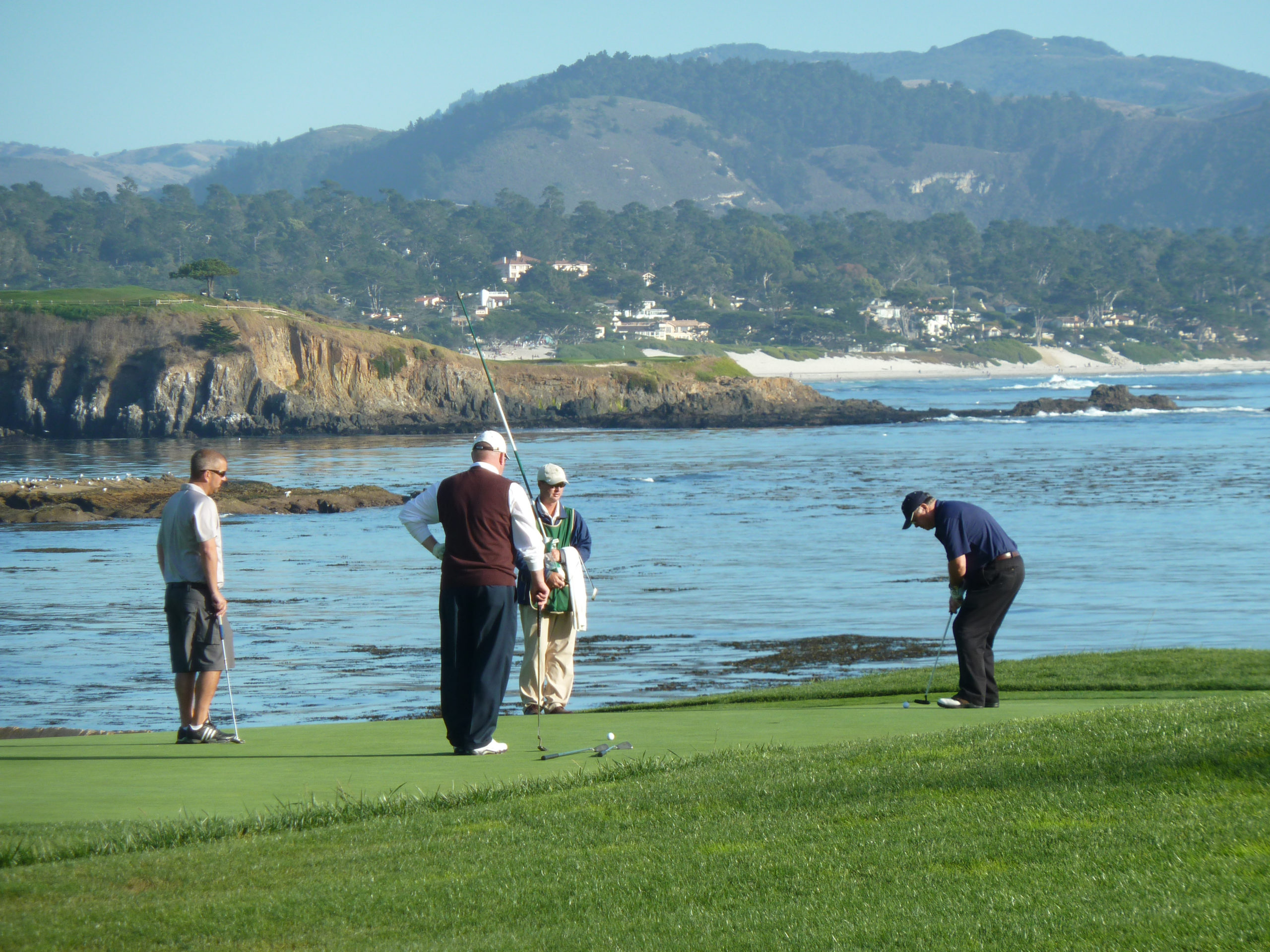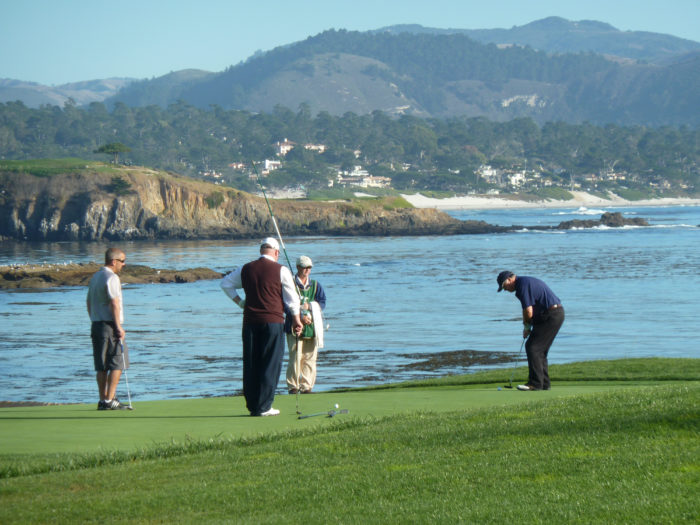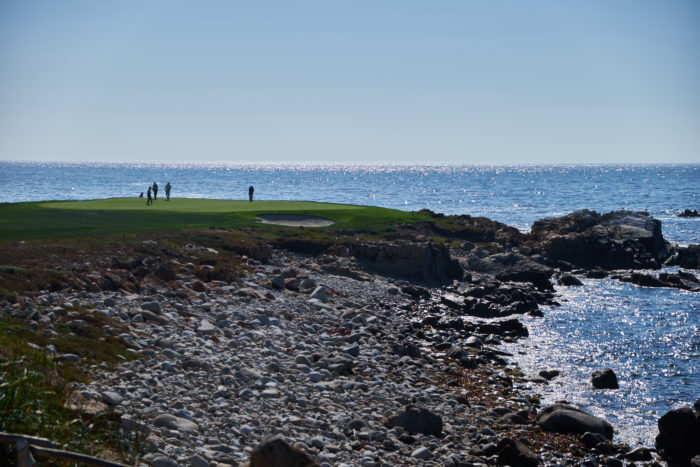
Where Green Meets Blue

Photo credit: Brian Sterling
By Matt Malinowski, VSFS Intern, Harvard University Extension School
This weekend, the AT&T Pebble Beach Pro-Am will once again draw a star-studded lineup of golfers and celebrities to the shoreline of Central California. Players will take their swings set against the pristine beaches, zephyr-warmed cliffs, and glimmering coasts of Monterey Bay National Marine Sanctuary. The PGA Tour competition takes place at three different locations, Pebble Beach Golf Links, Spyglass Hill Golf Course, and Monterey Peninsula Country Club Shore Course. At each course, the lush green hue of the fairway meets the vibrant blue water of the sanctuary and offers some interesting comparisons.
The golf tournament, now known as the AT&T Pebble Beach Pro-Am, started in 1937 as a simple charity event. Decades later, its coastal backdrop has become an iconic staple of the PGA Tour and has produced many dramatic moments in the sport of golf. Monterey Bay National Marine Sanctuary is also full of history and is celebrating its 30th anniversary as a protected area, the same year that the National Marine Sanctuary System celebrates fifty years of national marine sanctuaries. Submerged beneath the azure waves are over 1,200 shipwrecks and hundreds of prehistoric sites. Monterey Bay’s designation as a national marine sanctuary safeguards these sites and provides ample areas for recreation, research, and resource protection.
The atmosphere will be silent as golfers concentrate and tee up their opening drives. Only the exclamation of ‘fore!’ will ring out if they hit an errant shot. A similar sound occasionally breaks the rhythm of the sanctuary sea, alerting visitors to the presence of gentle giants. Water erupts in audible geysers of mist from the blowholes of blue and humpback whales as they feed in the plankton-rich waters not far offshore. These sprays can often be seen from the putting greens and rolling sand dunes of each course.
Golfers at the AT&T Pebble Beach Pro-Am will need to be adept at navigating a range of slopes and terrains, from speedy greens and sand traps to the dense grasses of the rough. Equally, Monterey Bay National Marine Sanctuary contains its own diverse topography. The sanctuary’s rocky shores shelter the thick foliage of the nation’s largest kelp forest. These underwater forests host a myriad of species from harbor seals to leopard sharks. In the Monterey Canyon, one of the deepest undersea canyons in the world, the dark depths are teeming with life both strange and beautiful, like the bloody belly comb jelly and the fangtooth.
With each methodical swing, competitors hope their shot will soar across the sky and land close to the pin. Golf balls, however, are not the only thing taking to the skies within the Monterey Bay National Marine Sanctuary. More than 180 species of shorebirds and seabirds fly within the sanctuary’s boundaries. While they may not be the type of “birdie” the golfers are hoping for, each species has its own unique adaptations for survival. In fact, the ruddy turnstone has a pitching wedge-shaped beak that would make many golfers who are stuck in a sand trap envious. It uses this specialized beak to flip stones and shells in search of food, much like a chip shot from the bunker.
As the competition reaches the 18th hole, ocean waves crash dramatically against the final fairway of Pebble Beach. It is the pinnacle of the tournament and players achieve their golf dreams by sinking the final putt in this magical place. Sports like golf illustrate perseverance, passion, and resilience in the face of adversity. In these changing times, new obstacles like climate change and ocean acidification also seem to arise against the preservation of our marine environments. But as a community, we can overcome these challenges. Volunteers, professionals, and recreators are all stepping up to support national marine sanctuaries like Monterey Bay – and we are not just aiming for par. Together, we can land a hole in one. Join us as we work to Save Spectacular sites like Monterey Bay and ensure that the green meets the blue for future generations.

Photo credit: Kārlis Dambrāns
